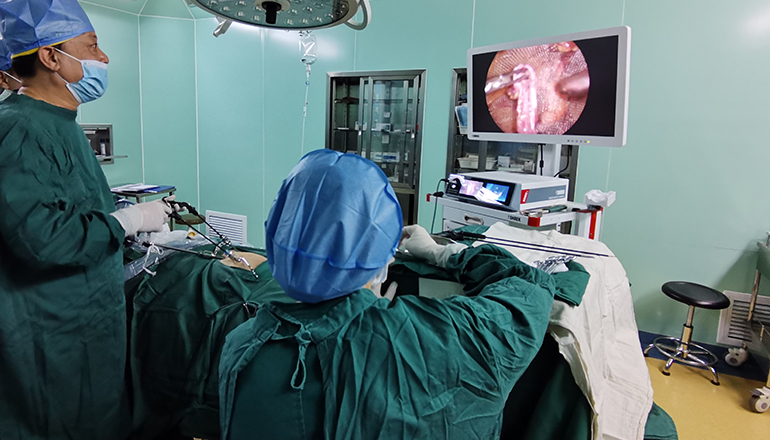- Shanghai, China
- [email protected]
- +86-21-58189111
Laparoscopic surgery is a minimally invasive surgical technique that involves the use of small incisions to insert a camera and specialized surgical instruments into the body. The puncture channel is a crucial aspect of laparoscopic surgery and refers to the entry point through which the instruments are inserted into the body.
The puncture channel is typically created using a trocar, which is a device that allows for the insertion of surgical instruments while minimizing damage to surrounding tissues. The trocar consists of a sharp pointed end, a hollow tube, and a handle for maneuvering the device.
To create the puncture channel, the surgeon will first make a small incision in the skin. They will then insert the trocar into the incision and use it to puncture through the abdominal wall and into the abdominal cavity. The hollow tube of the trocar is then used to guide the insertion of the surgical instruments.
One of the most important aspects of creating the puncture channel is ensuring that it is properly positioned. This requires a thorough understanding of the anatomy of the area being operated on and careful placement of the trocar to avoid damage to surrounding structures such as blood vessels, organs, and nerves.

Another key skill in creating the puncture channel is maintaining control and precision while inserting the trocar. This requires steady hands, a steady grip on the trocar handle, and a high degree of coordination between the surgeon and any assistants involved in the procedure.
The size of the incision and trocar used will vary depending on the specific procedure being performed. For example, a larger trocar may be necessary for procedures that require the removal of larger organs, while smaller trocars may be used for more delicate procedures such as those involving the reproductive organs or digestive tract.
Overall, creating the puncture channel is a crucial aspect of laparoscopic surgery that requires a high degree of skill and precision. By carefully selecting the appropriate trocar and paying close attention to the positioning and insertion of the device, surgeons can ensure that the procedure is performed safely and effectively.
In addition to creating the puncture channel, surgeons must also carefully manage the instruments that are inserted through it. The instruments must be guided and maneuvered through the trocar in a way that avoids damage to surrounding tissues while allowing for the successful completion of the procedure.
Finally, it is important to note that the creation of the puncture channel is just one aspect of laparoscopic surgery. Surgeons must also be highly skilled in using the camera and specialized instruments to visualize and manipulate the surgical site.
In conclusion, the puncture channel is a crucial aspect of laparoscopic surgery that requires a high degree of skill and precision. By carefully selecting the appropriate trocar, positioning and inserting the device with care, and skillfully guiding the surgical instruments through the channel, surgeons can ensure that the procedure is performed safely and effectively. Laparoscopic surgery offers many benefits over traditional open surgery, including less pain, smaller incisions, and faster recovery times. By continuing to refine their laparoscopic skills, surgeons can help to make these benefits available to more patients in need of surgical treatment.
Leave a Comments